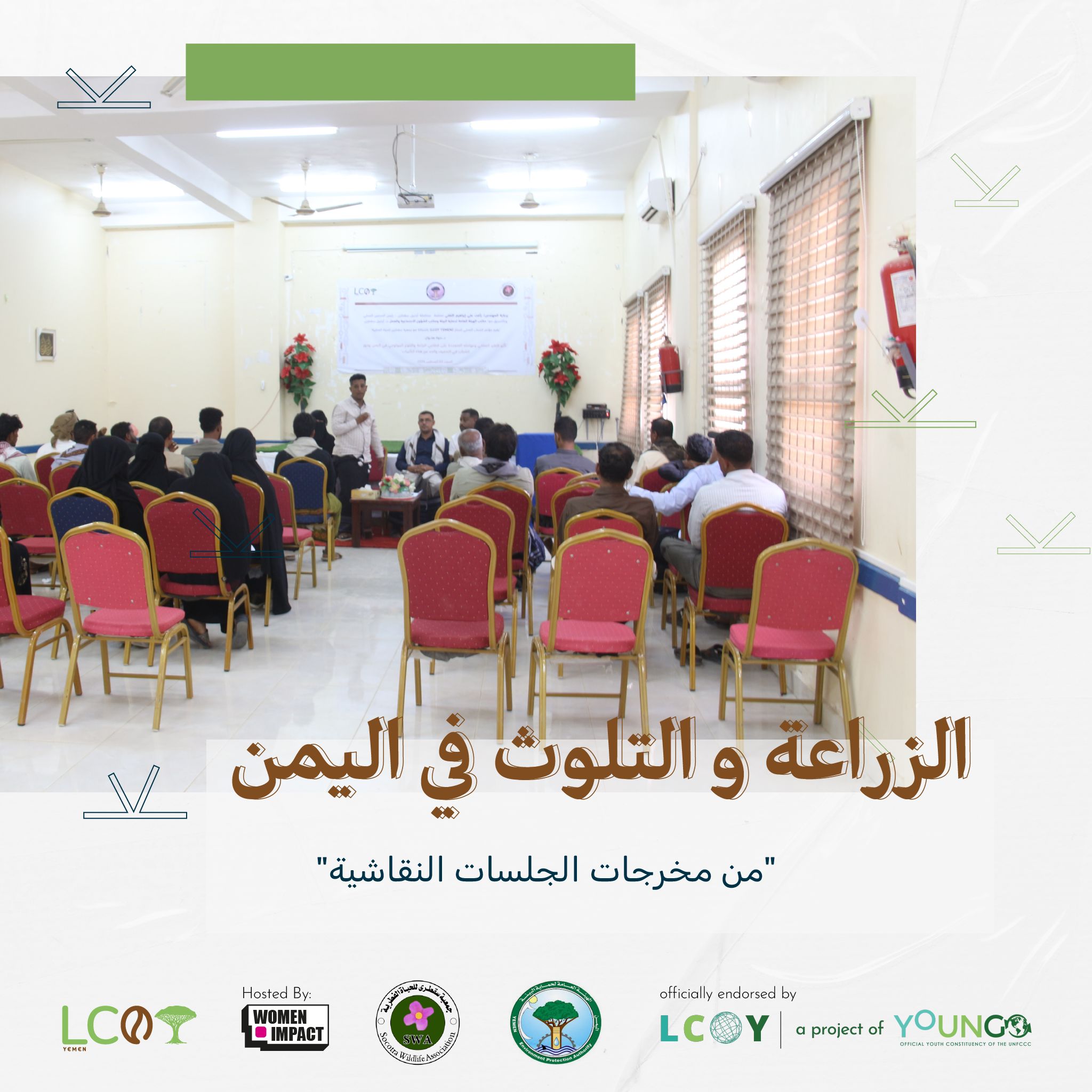
The Local Conference of Youth on Climate in Yemen (LCOY Yemen), in partnership with the Socotra Wildlife Association, held open and fruitful discussion sessions on Wednesday, August 3, 2024. These important events took place in Hadibo District, at the Kuwait Educational CompoundHall, under the generous patronage of the Governor of Socotra Governorate, Engineer Raafat Ibrahim Al-Thaqali, and in coordination with the General Authority for Environmental Protection Office and the Social Affairs Office in Socotra Archipelago Governorate. The sessions witnessed active participation from more than 30 environmental activists and those interested in environmental and climate change issues in the Socotra.
The first session focused on the issues of Agriculture and Pollution in Yemen. Participants were divided into working groups to discuss vital challenges, including pollution resulting from wastewater and its impact on biodiversity and agriculture, in addition to the problems of solid waste and its devastating effects on biodiversity in both marine and terrestrial environments. The groups also explored innovative ideas and practical solutions to reduce pollution and waste damage to agriculture, with an emphasis on the possibility of implementing hydroponics in Yemen. The second session was dedicated to Biodiversity, where discussions focused on the impact of climate change on biodiversity in the marine environment, particularly coral reefs and marine organisms. Light was also shed on the environmental challenges facing Yemeni islands and their unique biodiversity, especially Socotra, opening the floor for exchanging suggestions and recommendations for their protection.
Before concluding the discussion sessions, participants paid special attention to the issue of green space erosion and the misuse of natural resources and their impact on natural reserves. Key questions were raised about the most important behaviors and impacts threatening vegetation cover in natural reserves, the most prominent stances and solutions that must be taken to protect natural reserves and their vegetation cover, in addition to the ways in which green spaces and vegetation cover in these vital areas can be increased.
On Wednesday, August 3, 2024, the Local Conference of Youth in Climate Change in Yemen (LCOY Yemen), in partnership with the Socotra Wildlife Association, held open and productive discussion sessions. These important events took place in the Hadibow district at the Kuwait Educational Compound Hall. They were held under the generous patronage of the Governor of the Socotra Governorate, Engineer Raafat Ibrahim Al-Thaqali. The sessions were coordinated with the office of the General Authority for Environmental Protection and the Social Affairs Office in the Socotra Archipelago Governorate. More than 30 environmental activists and individuals interested in environmental and climate change issues in the Socotra archipelago actively attended the sessions.
The first session focused on Agriculture and Pollution Issues in Yemen. Participants were divided into working groups to discuss critical challenges, including the impact of sewage pollution on biodiversity and agriculture and the devastating impact of solid waste on biodiversity in both the sea and on land. The groups searched for innovative ideas and practical solutions to reduce pollution and the resulting damage to agriculture, focusing on the possibility of implementing hydroponics in Yemen. The second session focused on biodiversity and the impact of climate change on marine environments, particularly coral reefs and marine organisms. The environmental challenges facing Yemeni islands and their unique biodiversity, particularly on Socotra, were highlighted. Suggestions and recommendations for protecting these areas were shared.
Before concluding the panel discussions, participants addressed the issues of the erosion of green spaces and the misuse of natural resources, as well as their impact on nature reserves. They asked pivotal questions about the behaviors and impacts that most threatened vegetation in nature reserves, the attitudes and solutions that are most important for protecting nature reserves and their vegetation, and ways to increase green spaces and vegetation in these vital areas.